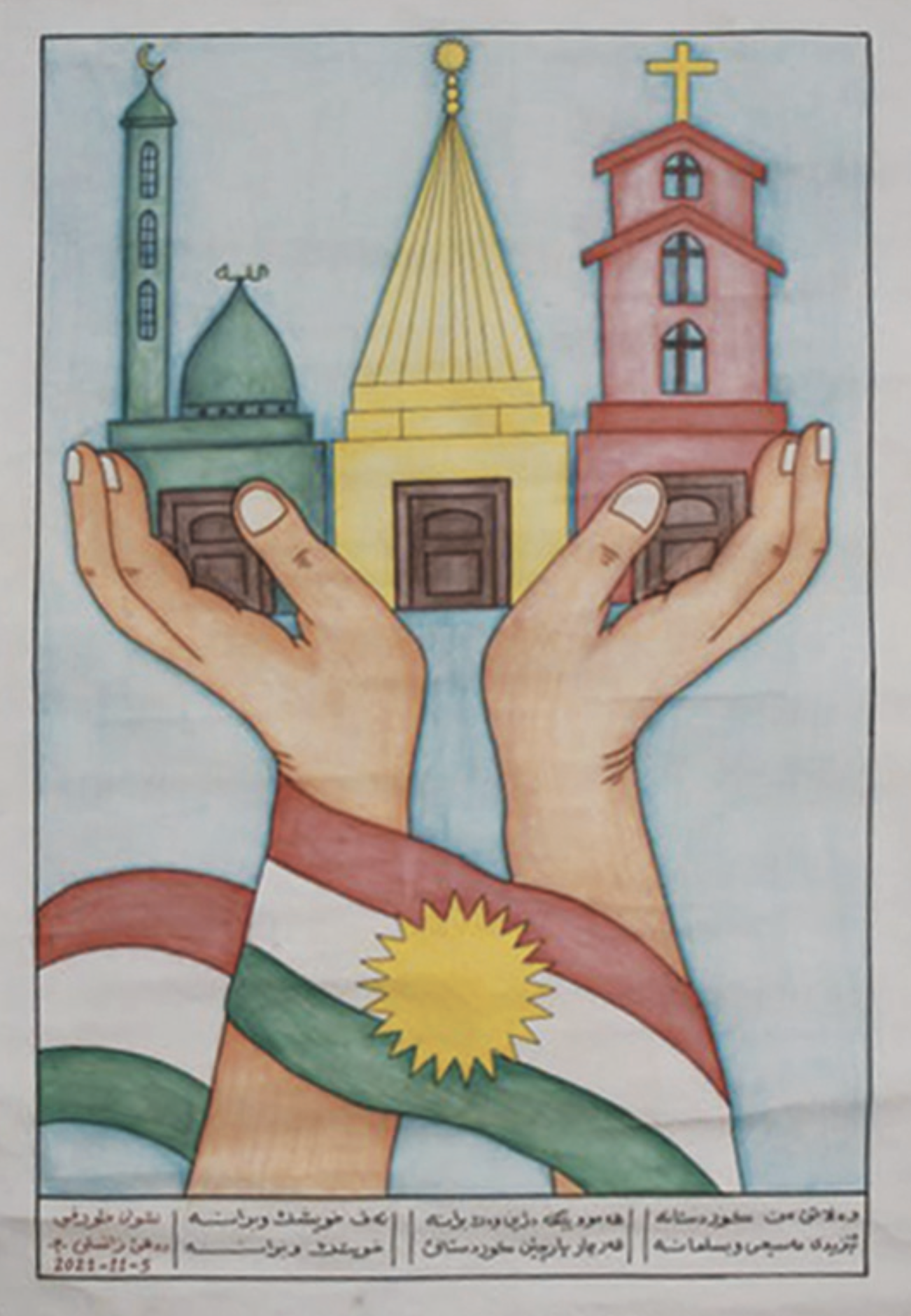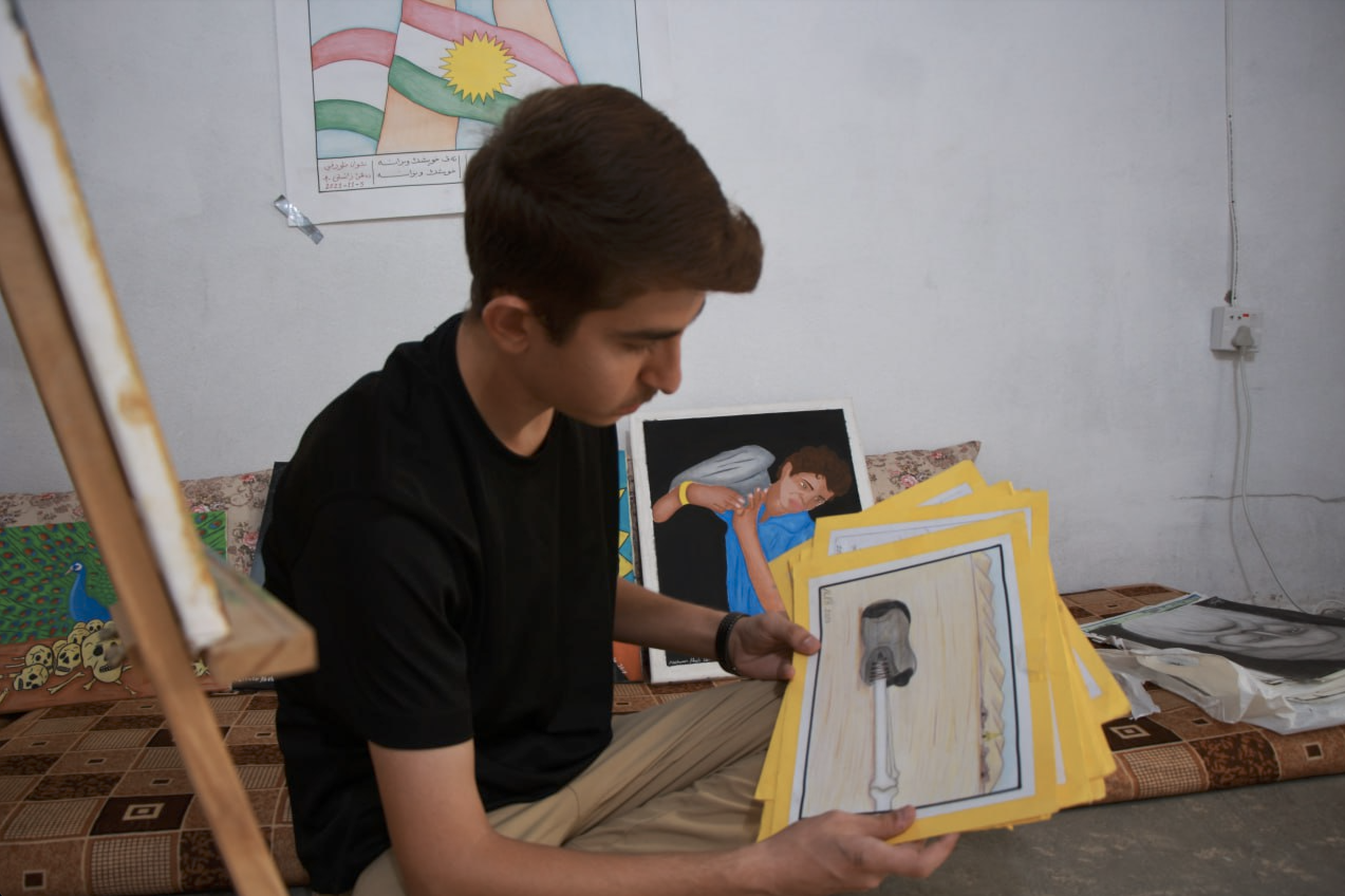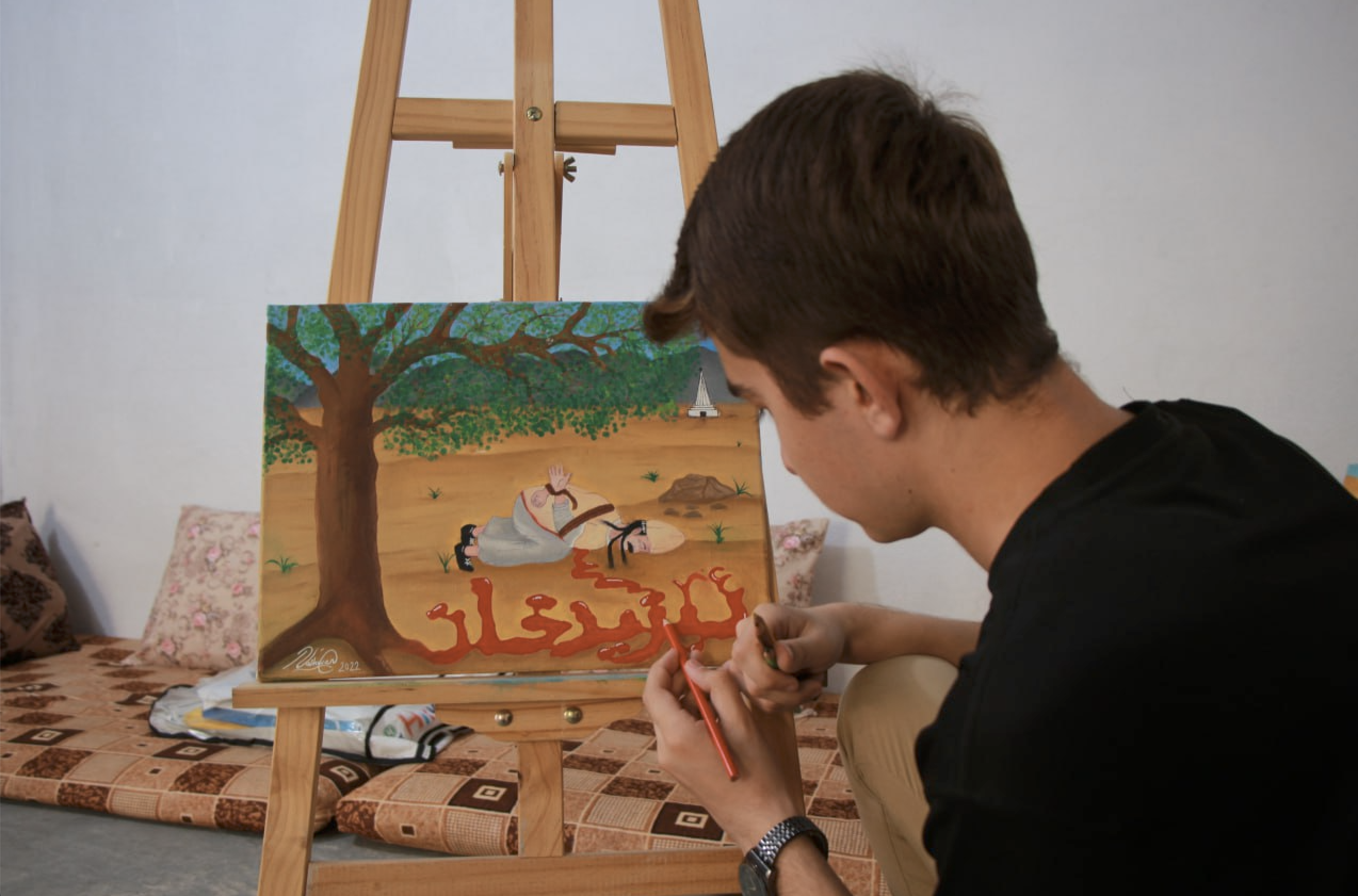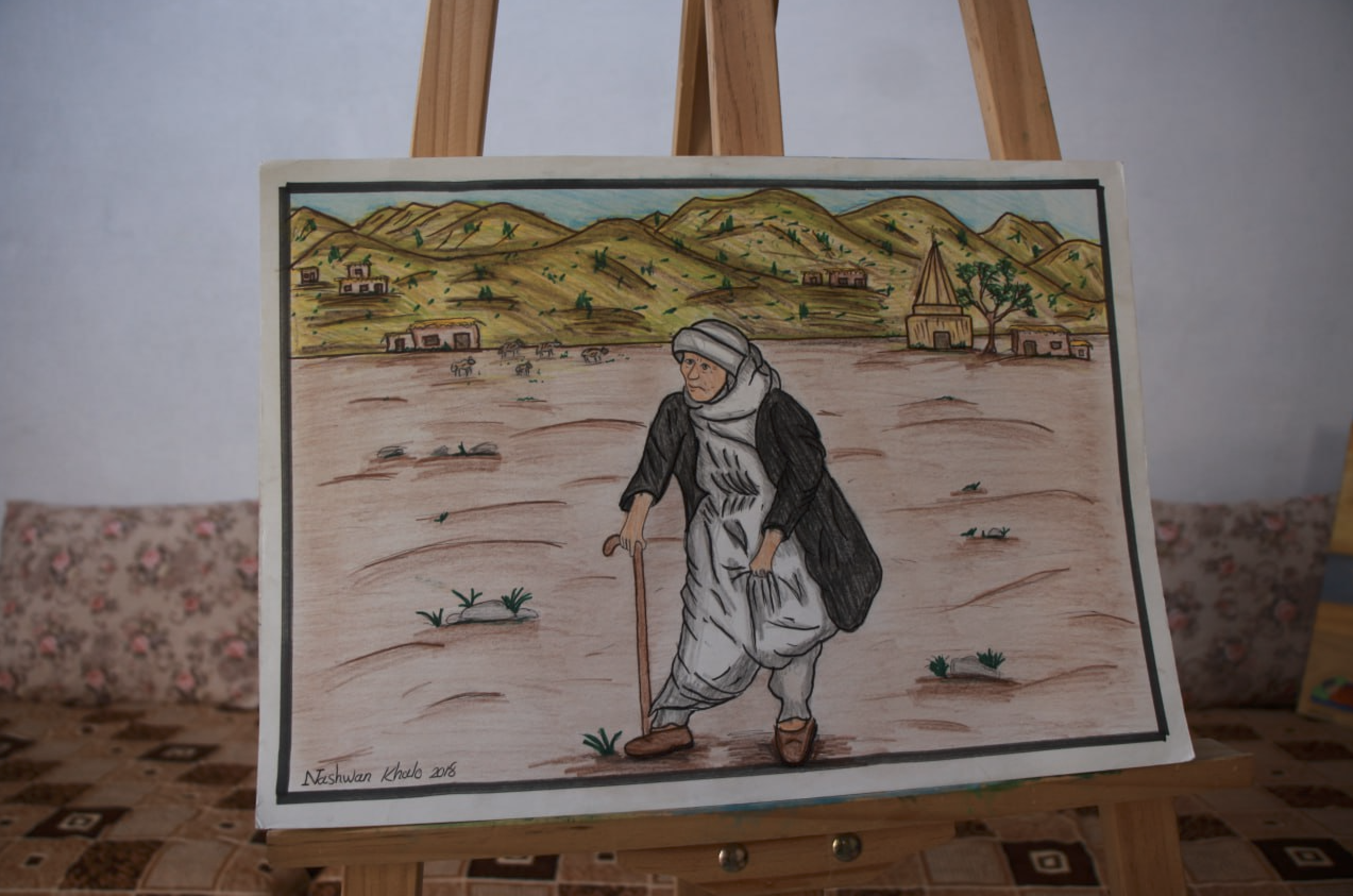As the district of Sinjar struggles to rebuild after the genocide perpetrated by ISIS in 2014, one young artist is using the power of his creativity to rewrite the narrative of his homeland. Nashwan Khalo Rafi, a Sinjar native, has transformed his heart-wrenching experiences into a series of compelling paintings that testify to the enduring spirit of his people and their yearning for a better future.
In Sinjar, Kurdish Yezidis, Christians, and Muslims live side by side in harmony, a symbol of unity in a region often scarred by division. Yet this peaceful coexistence was brutally shattered by the onslaught of ISIS in 2014. Nashwan, like countless others, was forced to flee the horrors, leaving behind his beloved homeland.

Nashwan’s journey as an artist started when he was a young boy with a penchant for painting scenes of beauty in Sinjar. Now he dedicates his art to reflecting the anguish of his people. In his words, “Before ISIS, we painted pictures of beauty; after them, we paint pictures of pain and suffering.”
Amid the destruction and despair, Nashwan has found solace in his art. He started painting to process the trauma, documenting the horrors of the Yezidi genocide and expressing his longing for a peaceful homeland. “We witnessed this tragedy and crime against humanity. ISIS attacked and tortured and killed thousands of our people, including women and children, making our lives bitter,” he recalled.
Nashwan’s art is not merely a medium for his own catharsis. He hopes that it can help bear witness to the atrocities committed against his people. His paintings convey the depth of his suffering, his family’s pain, and his community’s anguish to a global audience.

To date, Nashwan has created over 400 paintings, dedicating 50 of them to the Yezidi genocide. He has held eight exhibitions across the Kurdistan Region of Iraq, using his art to ensure that the tragedies of his people will not fade into obscurity. His work serves as a powerful reminder that the wounds of Sinjar remain unhealed, even as the years pass.
While his art speaks volumes, Nashwan’s aspirations extend beyond the canvas. He dreams of helping his people and contributing to a world where such tragedies are a thing of the past. “I don’t want my people or anyone else in the world to suffer the same fate as us. It is a duty on all of our shoulders,” he asserts.

Nashwan’s wishes are not far-fetched. In October 2020, an agreement between the Kurdistan Regional Government and the Iraqi Government was signed that aimed to restore peace and security in Sinjar. It called for the expulsion of all illegal forces from the town, including fighters affiliated with the Popular Mobilization Forces and the Kurdistan Workers’ Party (PKK), and paved the way for the return of over 150,000 Yezidi refugees currently living in camps supervised by the UN to their homes.
Despite international support for this agreement, its implementation has been painfully slow. The Yezidis, including Nashwan, continue to wait for the day when they can return to their homes, rebuild Sinjar, and once again reveal its beauty to the world.

As our conversation with Nashwan came to an end, he shared his deepest aspiration, one that has been delayed by political and military conflict. “I wish that our people could return to their homes freely, that Sinjar could be rebuilt, and that we could show its beauty to the world. Allow the children of Sinjar to see paintings of happiness, not sickness, disaster, and genocide.”
Nashwan Khalo Rafi’s art reflects the enduring spirit of the Yezidi people, who, despite their suffering, continue to hope for a brighter future. His brushstrokes, like the strength of his people, paint a path towards adaptability, healing, and the restoration of a peaceful Sinjar, where coexistence and unity can once again flourish.
Louai Esyani works as a media correspondent at Same TV and is also an active member of the Lalish Cultural Center.